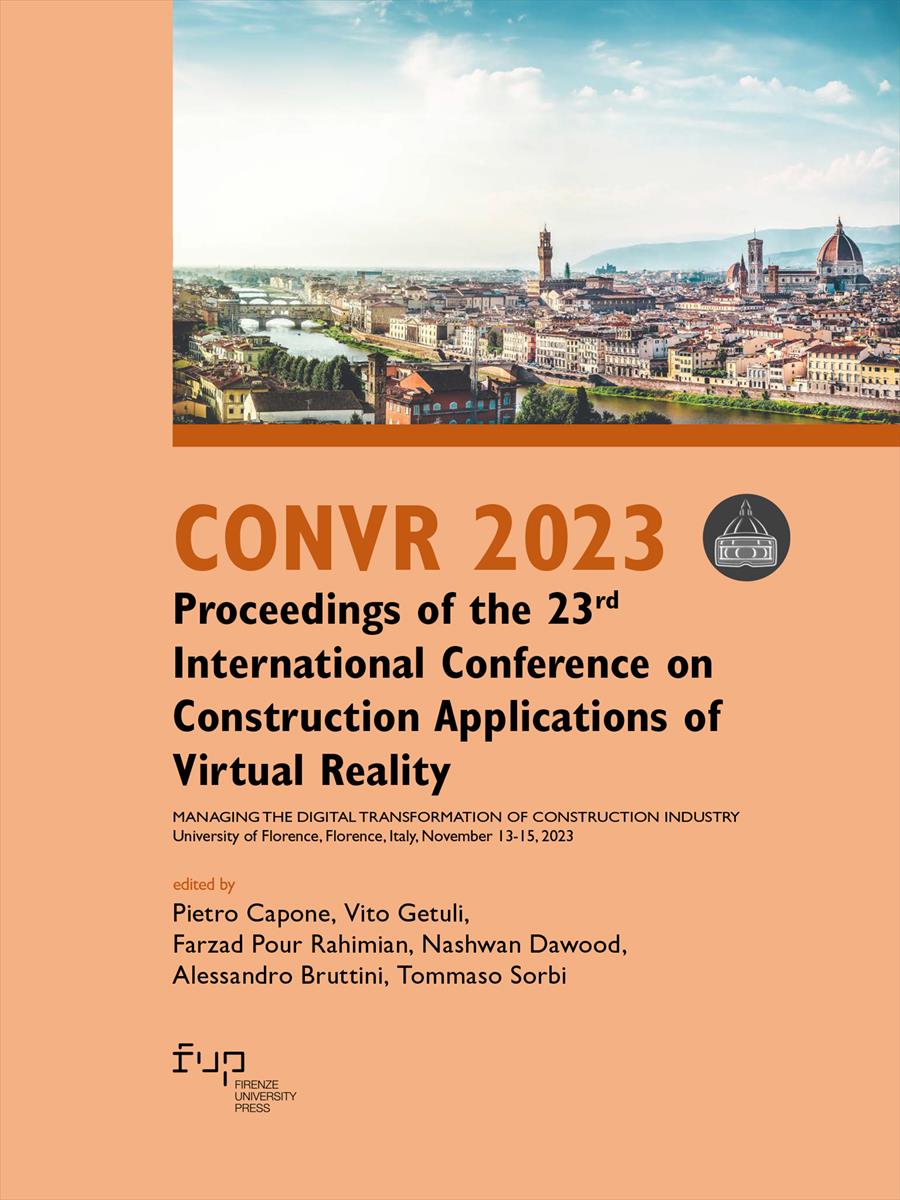- CONVR 2023 - Proceedings of the 23rd International Conference on Construction Applications of Virtual Reality
- Edited by Pietro Capone, Vito Getuli, Farzad Pour Rahimian, Nashwan Dawood, Alessandro Bruttini, Tommaso Sorbi
Construction of a Practical Finite Element Model from Point Cloud Data for an Existing Steel Truss Bridge
- Nao Hidaka
- Naofumi Hashimoto
- Tetsuya Nonaka
- Makoto Obata
- Kazuya Magoshi
- Ei Watanabe
- © 2023 Author(s) |
- CC BY-NC 4.0
- DOI: 10.36253/979-12-215-0289-3.114
The objective of this paper is to develop a semi-automatic method for constructing a practical finite element model from point cloud data of an entire span of a through-type steel truss bridge. In the first step, we introduced practical finite element models for truss bridges based on structural experiments and numerical analyses of a sway bracing located at the end support. We also proposed a basic method for semi-automatically constructing a finite element model of a sway bracing using point cloud data. This method was then extended for an entire of steel truss bridge. The point cloud data is converted to individual data structures which, in turn, are connected to construct a whole structure. The main members, such as upper chords, lower chords, and diagonals, are converted to fiber-based models by automatically creating central axis lines and cross-sections from the point cloud. The slab is converted to shell models by obtaining surfaces and thickness from the point cloud. The effectiveness of the proposed method was confirmed by comparing the analysis results from the finite element model manually created from the design drawing (drawing-model) with those obtained from the model generated by this method (point-cloud-model). The proposed method is more efficient than reading drawings and creating the models manually, and it was confirmed that the point-cloud-model shows response values close to those of the drawing-model within the design load. However, the reproducibility of the response values with more than the design load remains an issue, which can be solved by tuning plate thickness
- Keywords:
- Point Cloud,
- Fiber-based model,
- Steel Truss Bridge,
- Structural Analysis Model,
- Semi-Automatic Method,
Nagoya Institute of Technology, Japan
Nagoya Institute of Technology, Japan
Nagoya Institute of Technology, Japan
Nagoya Institute of Technology, Japan
Earthquake Engineering Research Center Inc., Japan
Aichi Prefectural Government, Japan
- Magoshi, K., Komuro, M., Yamasawa, T., Yui, K., MIHARA, R., Nonaka, T., Yoshioka, T., and Okui, Y., (2014). Dynamic Redundancy Analysis For A Steel Truss Bridge (in Japanese), Proceedings of The 17th Symposium on Steel Structures and Bridges.
- Suzuki, S., Miyamori, Y., Saito, T., Yamazaki, T., Dambiibaljir, M., and Mikami, S., (2019). Automated FE Modeling From 3D Point Cloud Model Of A Damaged Steel Structural Member (in Japanese), Journal of Japan Society of Civil Engineers F3, 75(2), I_141-I_149. DOI: 10.2208/jscejcei.75.2_I_141
- Nakamizo, T. and Mayuko Nishio, M., (2022). Finite Element Modeling With Shell Element From 3D Point Clouds Of Thin-walled Steel Structural Members (in Japanese), Intelligence, Informatics and Infrastructure, 3(J2), 786-794. DOI: 10.11532/jsceiii.3.J2_786
- Hidaka, N., Hashimoto, N., Nakamura, M., Magoshi, K., Nonaka, T., Obata.M, (2023). Construction analysis model of steel bridge by using point cloud data and accuracy verification (in Japanese), Journal of structural engineering. A, 69A, 637-647. DOI: 10.11532/structcivil.69A.637
- Ester, M., Kriegel, H. P., Sander, J., and Xu, X., (1996). A density-based algorithm for discovering clusters in large spatial databases with noise, Proceedings of the Second International Conference on Knowledge Discovery and Data Mining. Portland, Oregon, 226-231. DOI: 10.5555/3001460.3001507
- Preparata, F. P. and Hong, S. J., (1977). Convex Hulls of Finite Sets of Points in Two and Three Dimensions, Commu-nications of the ACMÄi0, 20(2), 87-93. DOI: 10.1016/0020-0190(78)90021-2
- Fischler, M. A. and Robert, C. B., (1981). Random Sample Consensus: A Paradigm for Model Fitting with Applications to Image Analysis and Automated Cartography, Communications of the ACM, 24(6), 381-395. DOI: 10.1016/B978-0-08-051581-6.50070-2
- Rusu, R. B. and Cousins, S., (2011). 3D Is Here: Point Cloud Library (PCL), In 2011 IEEE International Conference on Robotics and Automation (ICRA), 1-4. DOI: 10.1109/ICRA.2011.5980567
- Earthquake Engineering Research Center Inc., Japan, (2007). SeanFEM ver.1.2.3 Theoretical Manual and Verification.
- Japan Road Association (2017). Road Bridge Design Specifications (in Japanese). Government Publishing Office.
Chapter Information
Chapter Title
Construction of a Practical Finite Element Model from Point Cloud Data for an Existing Steel Truss Bridge
Authors
Nao Hidaka, Naofumi Hashimoto, Tetsuya Nonaka, Makoto Obata, Kazuya Magoshi, Ei Watanabe
DOI
10.36253/979-12-215-0289-3.114
Peer Reviewed
Publication Year
2023
Copyright Information
© 2023 Author(s)
Content License
Metadata License
Bibliographic Information
Book Title
CONVR 2023 - Proceedings of the 23rd International Conference on Construction Applications of Virtual Reality
Book Subtitle
Managing the Digital Transformation of Construction Industry
Editors
Pietro Capone, Vito Getuli, Farzad Pour Rahimian, Nashwan Dawood, Alessandro Bruttini, Tommaso Sorbi
Peer Reviewed
Publication Year
2023
Copyright Information
© 2023 Author(s)
Content License
Metadata License
Publisher Name
Firenze University Press
DOI
10.36253/979-12-215-0289-3
eISBN (pdf)
979-12-215-0289-3
eISBN (xml)
979-12-215-0257-2
Series Title
Proceedings e report
Series ISSN
2704-601X
Series E-ISSN
2704-5846
